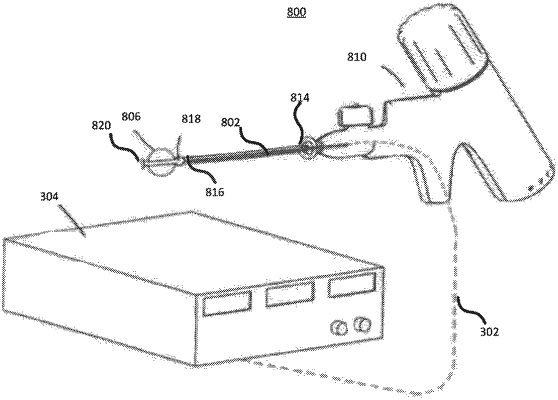| CPC A61B 18/1442 (2013.01) [A61B 5/01 (2013.01); A61B 5/0538 (2013.01); A61B 5/065 (2013.01); A61B 5/4836 (2013.01); A61B 5/4893 (2013.01); A61B 5/6819 (2013.01); A61B 5/6877 (2013.01); A61B 18/02 (2013.01); A61B 18/1492 (2013.01); A61B 17/24 (2013.01); A61B 2018/0022 (2013.01); A61B 2018/00327 (2013.01); A61B 2018/00434 (2013.01); A61B 2018/00577 (2013.01); A61B 2018/00696 (2013.01); A61B 2018/00791 (2013.01); A61B 2018/00875 (2013.01); A61B 2018/00904 (2013.01); A61B 2018/00982 (2013.01); A61B 2018/0212 (2013.01); A61B 18/1485 (2013.01); A61B 2018/1495 (2013.01); A61B 34/20 (2016.02); A61B 2562/0209 (2013.01); A61N 1/36 (2013.01)] | 16 Claims |

|
1. A system for ablating at least one nasal nerve associated with at least one symptom of rhinitis, the system comprising:
a probe shaft having a proximal end and a distal end;
an end effector permanently coupled to the distal end of the probe shaft;
at least two electrodes disposed at the distal end of the probe shaft such that at least one of the at least two electrodes are positioned distal to an entirety of the end effector, the at least two electrodes electrically coupled to an electrical source, wherein the at least two electrodes are configured to electrically stimulate at least one nasal nerve underlying a nasal surface in contact with the at least two electrodes in response to an electrical current generated by the electrical source, wherein the at least two electrodes are configured to detect a parameter indicative of a physiologic response to the electrical current; and
a processor operatively coupled to the electrical source, wherein the processor is configured to:
control the electrical current generated by the electrical source,
receive the parameter indicative of the physiologic response to the electrical current, wherein the physiologic response is at least one physiologic response selected from a group consisting of: a change in nasal secretion and a change in arterial blood flow, and
control, based on the parameter, the electrical current generated by the electrical source to cause the at least two electrodes to ablate the at least one nasal nerve underlying the nasal surface to reduce the at least one symptom associated with rhinitis.
|